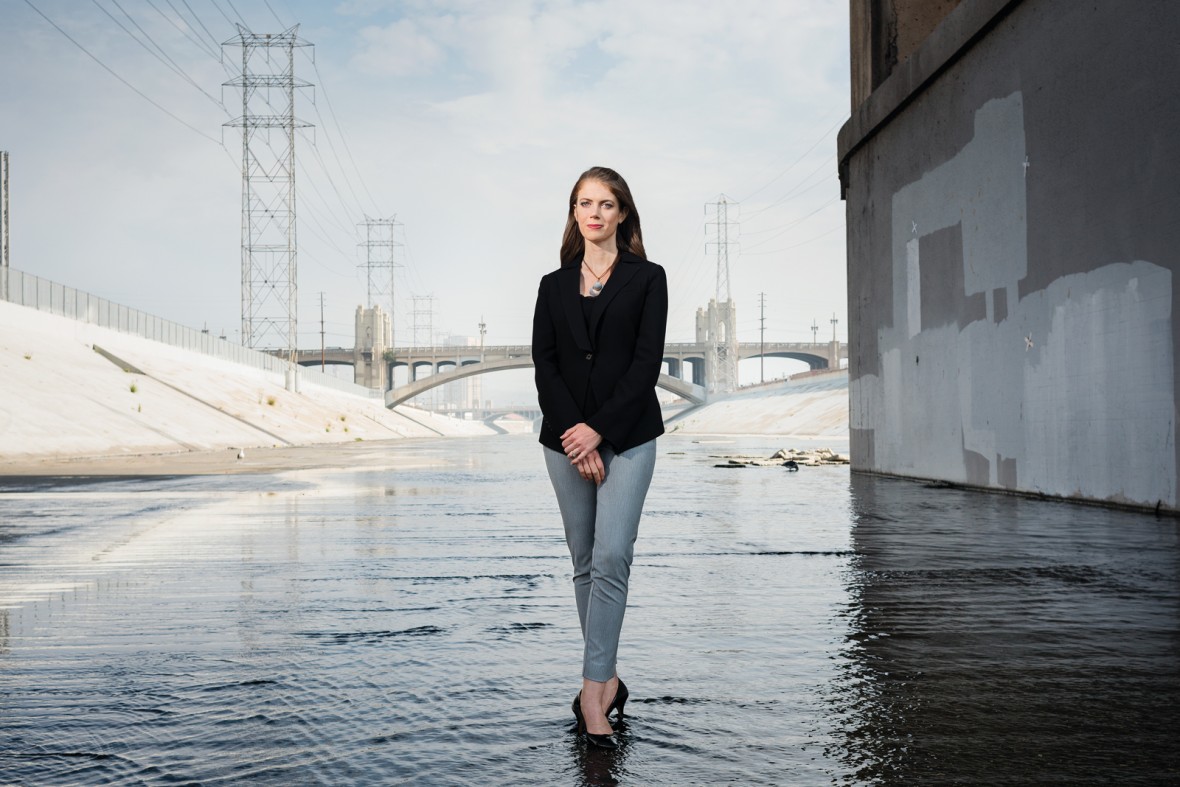
` Kelly Sanders, 31
University of Southern California
A researcher in drought-ridden California tries to better account for the ways we use water.
Just about all power plants use water in some way—primarily for cooling. In fact, generating electricity accounts for about 40 percent of all the fresh water that is drawn from reservoirs, rivers, and other surface sources in the United States. Kelly Sanders, an assistant professor of civil and environmental engineering at the University of Southern California, has developed new methods of analyzing the complex relationship of water and energy—and is showing how both resources can be managed more wisely.
Although power plants typically return water to the source after it runs through cooling systems, those withdrawals and returns can be disruptive to the environment. Many newer coal and natural-gas plants reuse water in their cooling systems so they do not need to withdraw as much of it from reservoirs and rivers, but in the process they lose more water to evaporation. And that means, as Sanders has highlighted, that many newer plants end up consuming more water overall. She also looks carefully at the water individual nuclear power plants use to keep from overheating and causing a meltdown. If the water source gets too warm and must cool down before it can be used, forcing the power station to scale back production, are the costs of the plant being miscalculated?
Having reframed how we measure water and energy usage, Sanders is becoming influential in policy and planning. She briefed Congress as it considered the Nexus of Energy and Water for Sustainability Act, which takes initial steps to have the federal government measure water usage not just in gallons but also in units of energy. “We select our power based on price,” she says, “but how do we define what’s cheap?”
—Ryan Bradley
